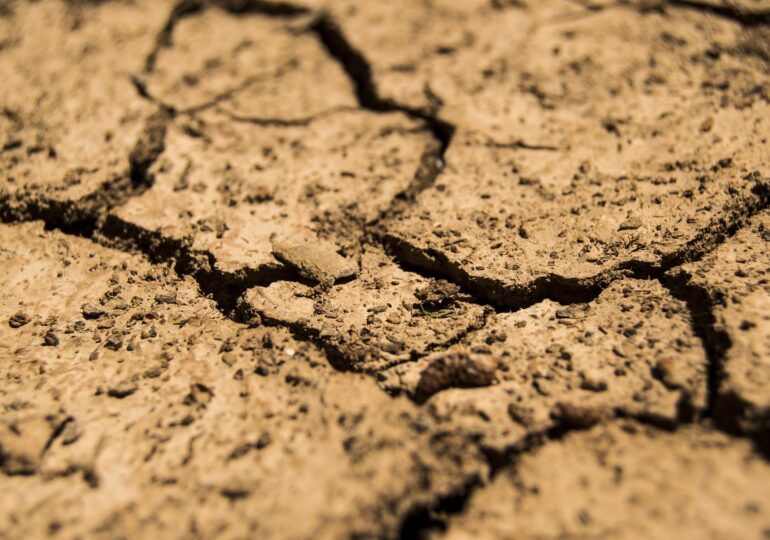The way global warming affects Romania is becoming increasingly obvious. Lakes have begun to dry up due to unusually high temperatures and lack of rainfall. In southern parts of the country, arable lands are gradually turning into a desert, in what is already being called the Sahara of Oltenia.
According to the National Administration for Romanian Waters, all of the country’s 40 most important lakes are suffering from water scarcity.
"The filling coefficient is currently at 70%, 10% less than the same period last year. The volume in the main 40 lakes is now at 3 billion cubic meters of water, smaller than the same period last year," said Ana-Maria Agiu, the spokesperson for the National Administration for Romanian Waters, to ProTV.
For example, Amara Lake in Buzău County, with an area of 800 hectares, has completely disappeared, leaving behind a sandy area.
And the lake in Ipotești - Olt has already dried up by 40% of its 15-hectare surface. The water is receding by a few centimeters every day.
There is moderate and severe soil drought over extensive areas in Moldova, Dobrogea, and Oltenia, as well as in significant parts of Muntenia and eastern Transylvania.
"The water deficit in the arable layer is 192 cubic meters per hectare, and crops planted in the spring will be affected: barley, oats, peas that need water to grow and germinate," said Claudia Dunăreanu, scientific director at the Șimnic Research Station.
The Environment Minister talks about the water shortage even in wells.
"Traveling to almost all counties in Romania, especially in Bacău County, where I come from, I am told almost every time that there is no more water in the wells.
If this used to happen once every 10 or 20 years in the past, now almost every summer people wonder how they will water their animals, how they will live without this precious resource - water in the wells.
I have almost weekly discussions with colleagues from the National Administration for Romanian Waters about the water table, a depletable resource, and how drought affects groundwater and surface water reserves in Romania," said Mircea Fechet.
Sahara of Oltenia
The Minister sounded the alarm on Thursday and warned that the Sahara of Oltenia is losing 1,000 hectares of arable land every year.
"I personally went to southern Romania, in Dolj County, Mehedinți County, and I saw with my own eyes how the desert simply swallows the arable land there. It's very hard to even think about how a community dependent on agriculture lives, especially since the Sahara of Oltenia, as we call it, loses 1,000 hectares of arable land every year.
This cannot be countered, according to our current knowledge, except through rapid afforestation (...) The experts also tell us that if we do not act quickly, in Romania, in 20 years or maybe a little longer, we will have an arid climate, very similar to Greece's climate.
It is true that, initially, many people were happy when they heard this news, but when we think about how it will affect agriculture, how it will affect other economic sectors, and people's daily lives, ultimately, it is not a joy to suffer such a profound change so quickly," said Mircea Fechet at the "Romanian Business & Investment Roundtable" conference.
He also spoke about increasingly frequent floods.
"When I go to flood-affected counties and I'm told that, statistically speaking, those phenomena should only occur once every 200 years, and they have had floods a year ago and five years ago, undoubtedly we are moving from these statistics and projections to daily life," Fechet said, as quoted by Agerpres.

